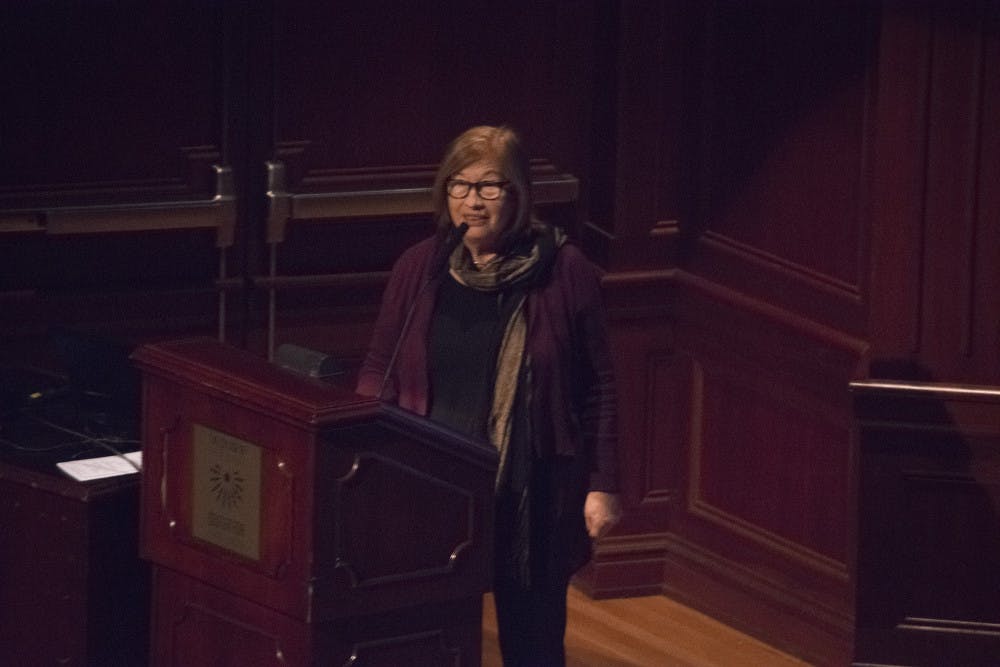By Chloe Freed
Correspondent
Hosted by Phi Beta Kappa, a primatologist and distinguished service professor of anthropology at Stony Brook University talked about her efforts to repopulate Madagascar with lemurs at a lecture titled “Back from the Brink of Extinction: Saving Lemurs in Madagascar” on Wednesday, March 23.
“We’re not finished yet with saving those lemurs,” Patricia Wright said. “I am hoping some you in the audience will help us out.”
Growing up on a farm in upstate New York, Wright has always kept animals close to her heart. In the early ’70s, she had a pet monkey, which was her catalyst to studying animals.
Through many negotiations and bargaining with National Geographic and other wildlife organizations, she was able to get grants to travel to South America and study primates for her dissertation.
The event began with a showing of the film “Island of Lemurs: Madagascar,” which features her work with conserving the Madagascar forests that lemurs call home.
The film highlighted the bright culture of those who live in Madagascar and the evolutionary history of the lemur species.
Wright also talked about her collaboration with Elwyn L. Simons, which led to the discovery of a new species of lemur, finding a presumed lost species of lemur and creating the Institute for the Conservation of Tropical Environments at Stony Brook to teach students about conservation and the Centre ValBio, a research campus in Madagascar’s Ranomafana National Park.
“The model we have is a good, strong foundation of research,” Wright said of the national park.

Along with her work with conservation, Wright works directly with the Madagascar people to ensure they can benefit from these efforts themselves.
“We always work closely with the Madagascar people. It’s their islands. It’s their lemurs,” Wright said.
Through health care, schools and financial aid, Wright and her colleagues have paid back the Madagascans for using their land.
“We have tree nurseries in all the schools, and they’re doing great,” Wright said.
Efforts are being made to improve the areas in Madagascar that are populated with lemurs that not only help the habitat, but the natives who call it home.
Sara Martin, a senior chemistry major, found Wright’s efforts admirable and worthy of praise.
“I think it is amazing that she did not only save the lemurs, but in the process of saving the lemurs, she was also helping the community around the lemurs,” Martin said.
Students who attended the talk showed interest in the issue at stake.
Izzy Distefano, a senior biology major, understands the importance of saving Madagascar’s lemurs.
“I think it’s a very worthy cause,” Distefano said. “Lemurs are kind of this unique case of this super hallmark animal. … When you save the lemurs, you save all the plants, too.”
The event brought awareness to a cause not many hear about on a daily basis.
These expeditions are solely based on grants and donations that are given to Wright and her team. Through awareness, money is collected to go toward this issue.
“We just raised $7 million to save lemurs,” Wright said. “Isn’t that wonderful?”
Wright concluded the talk with exciting news for the audience.
“I just discovered a lost rainforest,” Wright said, “This is one you’re going to hear about on the news.”







